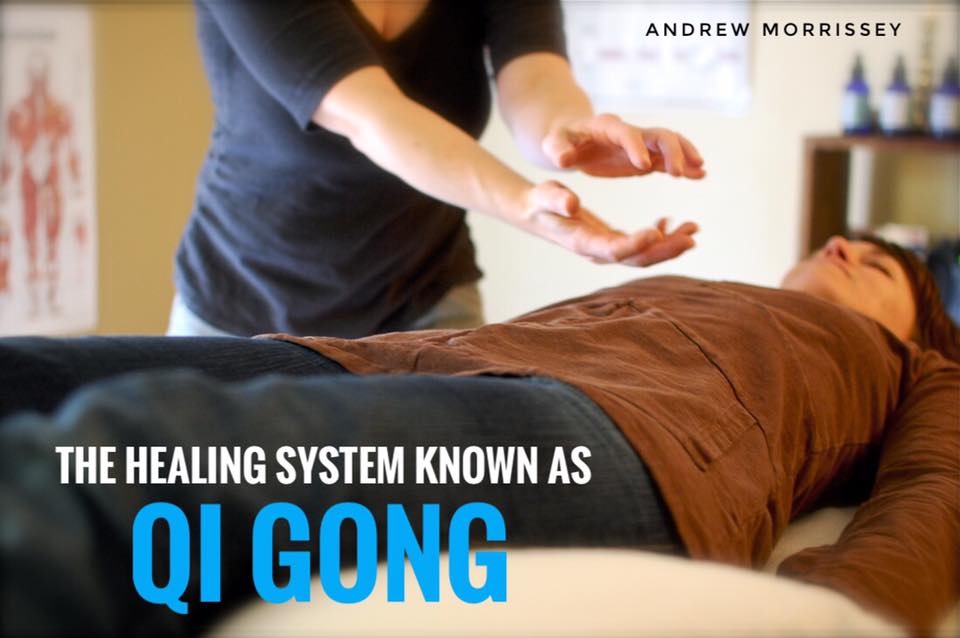The Healing System Known as Qigong
There are a multitude of ancient arts out there that are prized for channeling a true mind-body connection. One of those is Qigong (pronounced ‘chi-gong’). This Chinese healing system has been used for thousands of years, similar to yoga, and has had a truly beneficial impact on those who regularly practice it. Whether you are a fitness lover or have a hard time getting motivated to move out of bed, Qigong is a worthwhile art to practice.

The Etymology
Qigong, also known as Chi Kung, is made up of two Chinese words. The National Qigong Association explains it as such:
Qi – pronounced “chee,” this is usually translated as the “vital-energy” or life force that runs through everything in the entire universe;
Gong – pronounced “gung,” means “accomplishment,” or a skill that becomes honed through years of steady practice.
Therefore, when you put Qigong together, you get the meaning “cultivating energy.” This describes Qigong perfectly, because it is indeed a system of maintaining health, increasing vitality, and healing the mind and body.
What Qigong Does
Qigong is useful in many different aspects of life:
Mental health
Spirituality
Physical Conditioning
Emotional Health
Build on a martial arts foundation
In China, Qigong is generally used to soothe a broad range of maladies including chronic pain. People practice the art to aid in the recovery and treatment of cancer, internal organ conditions, poor circulation, joint pain, muscle pain, and more.
Since the movements of Qigong are slow, almost like a measure dance or yogic sequence. When practiced, the rhythmic movements work to reduce stress, build muscle endurance and stamina, and even improve cardiorespiratory functioning.
The only bonus is that anyone, regardless of their age or physical fitness level, can enjoy Qigong.
The elderly can increase their quality of life. Children can learn to calm down and learn to balance strength with mental awareness.
How Qigong Affects the Mind-Body
Qigong has been classified as a martial, medical, and spiritual art, because it blends the use of postures, breathing techniques, and concentration. Qigong integrates all of these elements through the gentle movements while synchronizing the breath. The practitioner becomes more aware of their surroundings, as well as with the Qi flowing through their bodies.
In that sense, a positive outlook on life is not only bolstered, it is encouraged. To successfully unblock the flow of energy, Qigong teaches you how to move with purpose and how to breathe to encourage yourself. For many, the practice of Qigong has replaced harmful habits and attitudes.
Another way of looking at Qigong is an active way of preparing the mind and body for meditation. By soothing the agitating mind and restless body, you can better focus on your breathing in peace.
Qigong and Tai Chi
Many people, especially in Western civilizations tend to get the two mixed up. While tai chi may also be considered an internal martial art, the movements that are practiced are slightly different or have varying tempos and themes. This does not mean you should practice one or not the other, as they are both beneficial.
Yet, it is important to remember that qigong is older than tai chi—or is, in fact, the parent of tai chi. Moreover, tai chi is a martial art, qigong is solely for healing.
So what is qigong? The ancient Chinese healing system is over 3000 years old, and it is gaining popularity for its salubrious effects on the mind and body. Anyone can practice qigong to learn how to heal their bodies from the inside out and tap into their Qi, or life force. Though the movements are slow and sustained, the overall benefit is incredibly dynamic.
© Written by Andrew Morrissey
www.andrewmorrissey.com